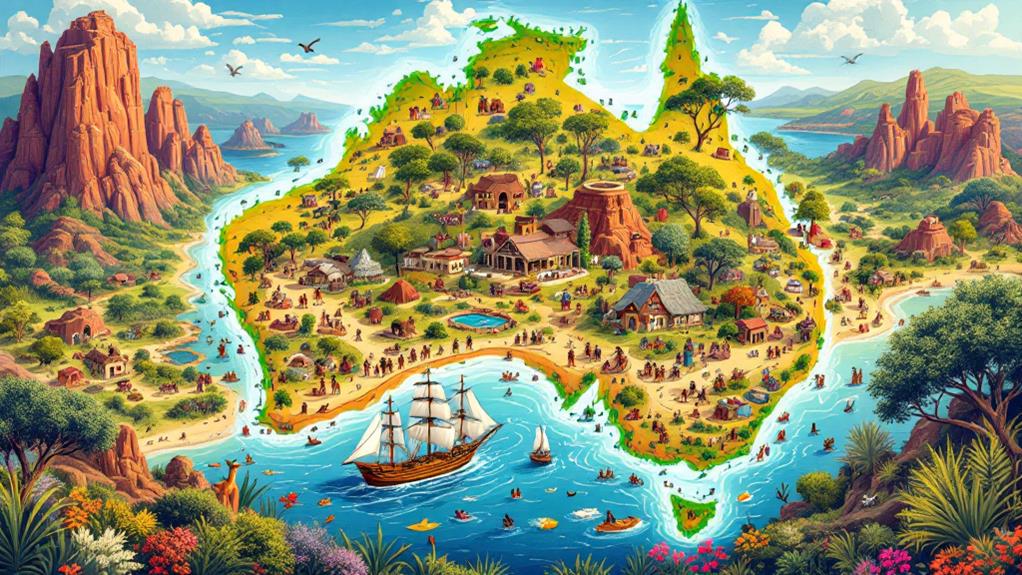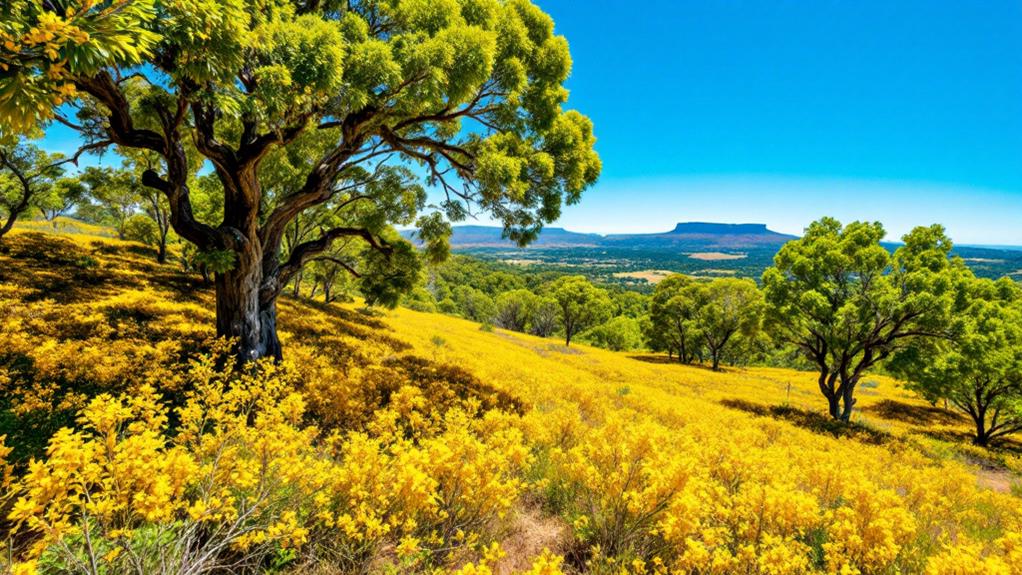Who Were the Early Inhabitants of Australia? The History of Indigenous Peoples
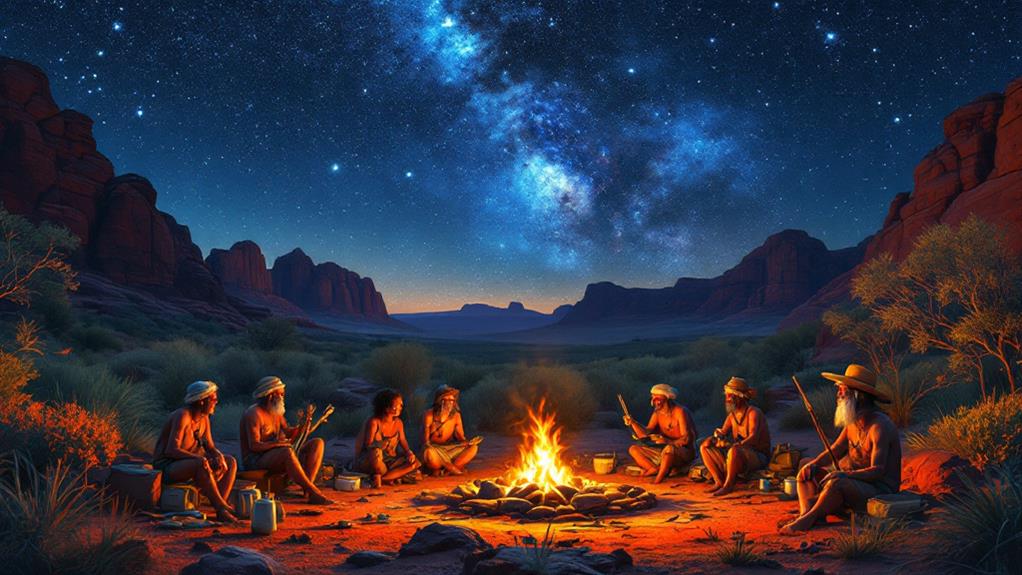
You'd be fascinated to learn that Indigenous Australians have a profound history dating back over 65,000 years. Their ancestors traveled from Southeast Asia, using impressive seafaring skills to navigate vast distances. They settled across the continent, establishing rich cultural practices and social structures. Over time, they developed complex tools and adapted to diverse environments, including harsh arid regions. Indigenous societies thrived, with over 250 unique languages and well-defined social systems. Unfortunately, colonization in 1788 brought severe challenges and population decline. Yet, the resilience and strength of Indigenous communities persist, offering much more to uncover about their enduring legacy.
Origins and Migration
Imagine commencing an expedition tens of thousands of years ago, as the earliest Aboriginal peoples did, to reach the vast continent of Australia. Your quest would have likely started in Southeast Asia, maneuvering through land bridges and short sea crossings during a time when sea levels were much lower. This migration marked a monumental chapter in human history, as Indigenous Australians began their settlement on this ancient land.
Genetic evidence reveals that multiple waves of migration contributed to the ancestry of these early settlers. Diverse donor groups from Southeast Asia made their way across challenging landscapes, establishing a rich cultural tapestry that still exists today. Their advanced seafaring skills allowed them to traverse distances over 120 miles, showcasing remarkable guidance abilities.
As you settle in Australia, you'd encounter archaeological sites like Nauwalabila I and Madjedbebe in the Northern Territory. These sites provide significant evidence of early human settlement, offering a glimpse into how these Indigenous Australians adapted to their new environment. Your expedition, then, was not just about migration—it was about pioneering the foundations of a lively, enduring culture that thrived against the odds.
Archaeological Discoveries
Archaeological findings have revealed a fascinating chronicle of human habitation in Australia, dating back approximately 65,000 to 50,000 years ago. At key archaeological sites like Nauwalabila I and Madjedbebe in the Northern Territory, you can find evidence of early human occupation. These sites showcase the remarkable resilience and adaptability of Indigenous Australians through millennia. During the Last Glacial Maximum, approximately 30,000 to 18,000 years ago, people not only survived but thrived, developing complex tool-making techniques. Around 8,000 years ago, advanced hafted stone implements emerged, indicating a sophistication in crafting tools that improved their daily life.
As you investigate these ancient landscapes, you'll reveal that permanent habitation of arid areas began around 10,000 years ago. This suggests that Indigenous Australians adapted remarkably well to environmental changes, establishing communities and engaging in complex social behaviors. Unfortunately, their impact on the environment also contributed to the extinction of over 60 animal species, including the megafauna. This extinction, linked to human hunting and shifting ecological conditions, underscores the profound interactions between these early inhabitants and their surroundings. These archaeological revelations paint a vivid picture of a people deeply intertwined with their land and its evolving ecosystems.
Cultural Practices
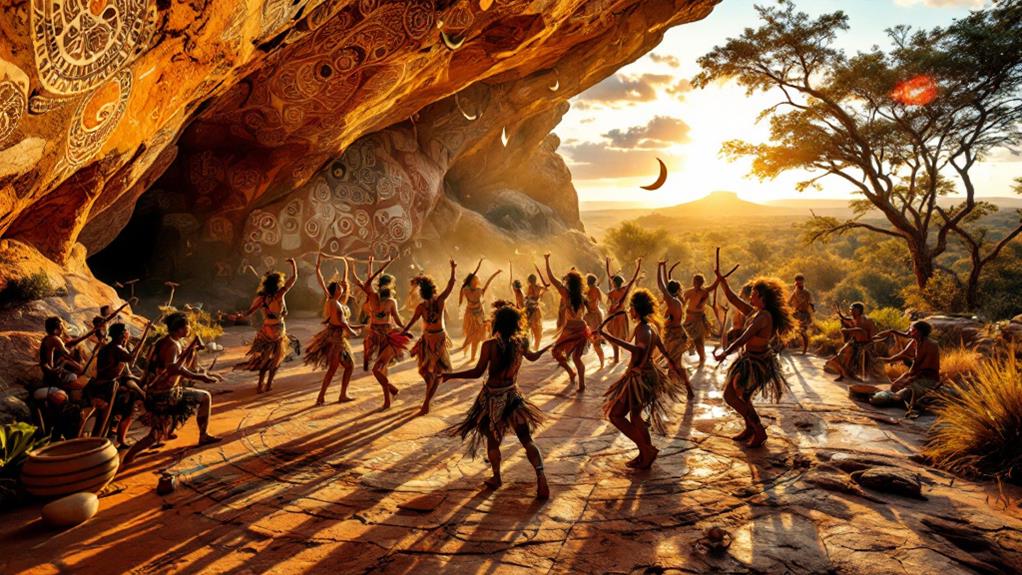
Diversity characterizes the cultural practices of Indigenous Australians, reflecting the myriad of languages and traditions that have immersed across the land. You'll find that Aboriginal cultures are rich and varied, with over 250 languages spoken before colonization, each contributing to a unique identity across different regions. These languages weren't just a means of communication but were essential to maintaining and transmitting oral traditions that kept histories alive. Stories of the Dreaming connected people to their ancestors, offering a sense of belonging and continuity.
In terms of social structure, Aboriginal communities often adopted egalitarian systems. Kinship systems played a vital role in maintaining social cohesion, dictating relationships and responsibilities within the group. Ceremonial gatherings, such as corroborees, facilitated the transmission of cultural practices, reinforcing community bonds.
You'd see that traditional lifestyles revolved around resource gathering, with seasonal movements designed to harmonize with the land. Controlled burns were one of the environmental management techniques that sustained food supplies. Meanwhile, the Torres Strait Islanders, distinct from mainland Aboriginal peoples, developed their own cultural practices, incorporating horticulture and marine resource utilization. They established village life around 4,000 years ago, showcasing their ingenuity and adaptability.
Traditional Lifestyles
Traditional lifestyles of Indigenous Australians were deeply intertwined with the land, reflecting a profound understanding of their environment. You can see this in their practice of seasonal movement, as Aboriginal communities migrated between coastal settlements and inland river headwaters. This movement wasn't random; it was a strategic approach to access diverse resources, ensuring their survival and maintaining an ecological balance.
The Indigenous population relied heavily on hunting and gathering, which required a thorough knowledge of local flora and fauna. They didn't just take from the land; they managed it. Through sophisticated environmental management techniques like irrigation systems and controlled burns, they sustained food supplies and improved the landscape. This connection to land was more than practical—it was spiritual, forming the core of their culture and daily life.
Today, over half of the Aboriginal population lives in towns, facing socio-economic challenges and poor living conditions. These challenges are remnants of historical disruptions that have affected their traditional lifestyles. However, the deep-rooted connection to land remains a crucial part of their identity, continuing to influence their efforts to overcome these modern obstacles.
Impact of Colonization

The colonization of Australia by the British in 1788 marked a profound turning point for Indigenous Australians, leading to devastating consequences for their communities and way of life. You see, the British introduced the concept of *terra nullius*, declaring the land as belonging to no one and disregarding Aboriginal land ownership. This principle justified the widespread dispossession of Indigenous peoples, stripping them of their ancestral lands and eroding their rich Aboriginal culture.
- Population Decline: The Indigenous population suffered an over 80% decline, caused by diseases like smallpox and violent encounters with European settlers. This decimation was catastrophic, leaving a lasting impact on communities.
- Cultural Erosion: Assimilation policies, especially by the mid-20th century, aimed to absorb Indigenous peoples into European ways, forcibly removing mixed heritage children and further disintegrating Aboriginal culture and identity.
- Legal Challenges: The Mabo Case in 1992 was significant, ultimately acknowledging Indigenous land rights and challenging the terra nullius doctrine. However, despite this landmark decision, entrenched inequalities and ongoing challenges persist for Indigenous communities.
Understanding this history is essential in recognizing the full impact of colonization and advocating for meaningful change and reconciliation today.
Social Structures
Harmony and interconnectedness define the social structures of Indigenous Australian societies. You'll find that Aboriginal societies are organized into intricate social structures, primarily consisting of clans and kinship groups. These groups not only facilitate resource sharing but also uphold cultural practices that have been passed down through generations. Their social organization, often featuring two inter-marrying moieties, promotes genetic diversity and strengthens social cohesion within the community.
In these societies, each clan maintains its own defined territory for foraging, and they coordinate seasonal movements to optimize resource exploitation across regions. This mobility guarantees that resources are used sustainably and efficiently. Cultural practices, particularly annual gatherings or corroborees, play a vital role. They serve as focal points for trade, marriage arrangements, and the reinforcement of kinship ties, guaranteeing that relationships remain strong and interconnected.
Aboriginal societies are inherently egalitarian, with shared responsibilities in resource management. Men generally engage in hunting, while women focus on gathering activities, highlighting a balanced division of labor. These responsibilities guarantee that everyone contributes to the community's well-being. Through these complex yet harmonious social structures, Aboriginal societies have thrived for millennia, deeply connected to their land and each other.
Contemporary Challenges

Colonization drastically altered the lives of Indigenous Australians, resulting in a sharp population decline and enduring challenges. The aftermath of British settlement saw an Indigenous population plummet from about one million to merely 60,000 due to violence, disease, and oppressive policies like child removal. Despite the 1992 Mabo Case recognizing native title rights, Indigenous Australians still confront land theft and destruction, which underscores ongoing human rights violations.
You're likely aware of the persistent racism and violence facing Indigenous communities, especially in police custody, which highlights systemic inequalities. These issues are compounded by significant socioeconomic challenges, leaving Indigenous Australians with lower life expectancy, higher infant mortality, and increased suicide rates compared to their non-Indigenous counterparts.
However, resilience shines through as Indigenous Australians continue to fight back. Their activism is visible in community initiatives and legal actions, showcasing a determination to tackle these contemporary challenges. Consider these pressing issues that need your attention:
- Land Rights: Despite legal recognition, land theft remains a critical issue.
- Systemic Inequality: Racism and violence persist, highlighting societal flaws.
- Health Disparities: Socioeconomic challenges contribute to lower life expectancy.
Indigenous Australians' resilience in confronting these challenges is a reflection of their enduring spirit.
Path to Recognition
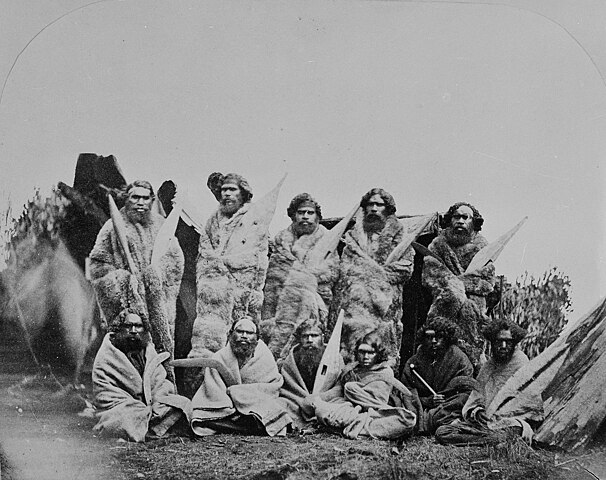
Recognize the resilience of Indigenous Australians as they continue to battle systemic inequalities and land rights issues. The landmark Mabo Case in 1992 was a turning point, legally recognizing Indigenous land rights and overturning the harmful concept of terra nullius. This case laid the groundwork for land returns and further advocacy. Yet, the struggle for political recognition persists, as seen in the 2023 referendum's rejection of an Indigenous advisory body in the Australian Constitution.
The 1967 referendum was another significant moment, enabling Aboriginal Australians to be counted in the national census and allowing the federal government to legislate on their behalf. Despite these victories, real change requires ongoing advocacy. Indigenous leaders tirelessly push for cultural preservation and social justice, ensuring their voices are heard.
Government initiatives have shown some success, with policies increasingly reflecting the need for Indigenous rights and community partnerships. However, the path forward demands vigilance and persistent effort. You can see this in the continuous push for broader recognition of Indigenous Australians. Their determined advocacy aims to secure not just land rights but also a rightful place in Australia's political landscape, ensuring their cultures and communities thrive.

